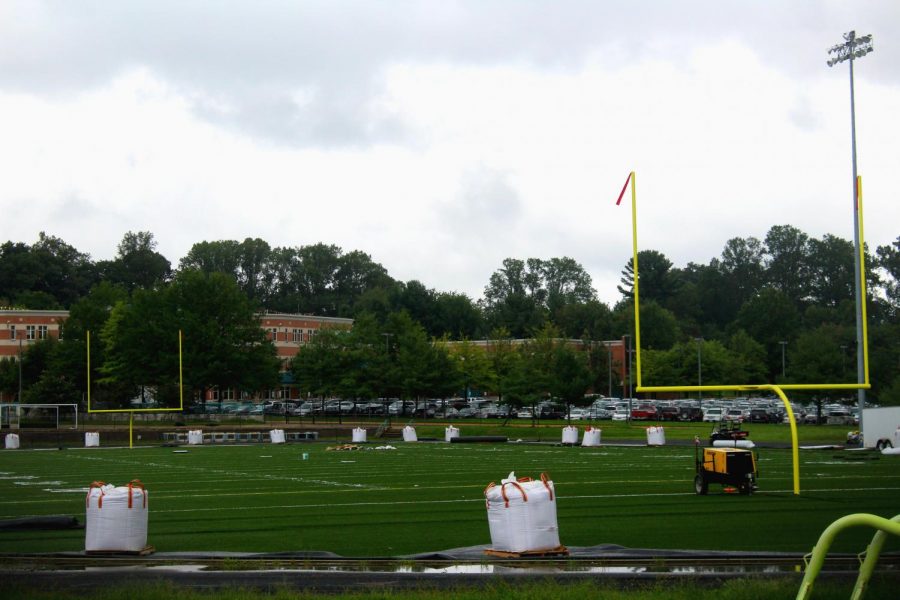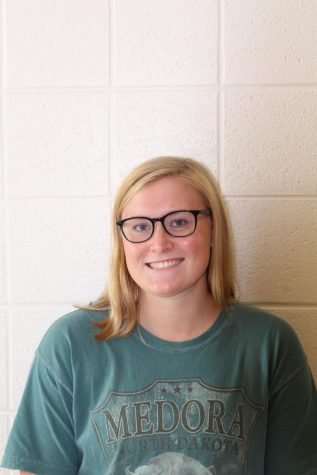MCPS: Stop building more turf fields like ours
The turf field under construction last year. The field has proven to be a dangerous surface for athletes to play on.
November 28, 2019
“And the field takes another victim!”
For my soccer teammates and me, this joke has become all too colloquial at every home game. But as we waited two months for Whitman’s new turf field to open last fall, did we expect to be cracking that joke multiple times per game? Definitely not.
The turf field was supposed to be state-of-the-art, made with a different material than older turf fields with “cancerous” black pellets at schools like Walter Johnson and Wootton. Whitman isn’t the only school that has this type of turf field; B–CC, Wheaton, Richard Montgomery and Einstein all have relatively similar surfaces.
Though a fair number of Whitman athletes appreciate the beauty of playing on natural grass fields, some of us that play in the stadium were initially optimistic about the idea to replace the grass field with turf. MCPS installed the turf field to allow the Montgomery Soccer Incorporation practice time in the stadium, help avoid game cancellations due to wet grass and provide the community with longer field access.
Now it’s been a year since the installation of the turf, and most athletes, whether from Whitman or opposing teams, aren’t thrilled — we often leave our games with burns and other turf-related injuries.
As a soccer player, I’m constantly moving. When I’m running on our turf field, I feel like I’m slipping on an ice rink. Trying to go from a full sprint to an immediate stop is close to impossible on this field, and I fall flat on my backside dozens of times during practices and games on the field.
Defending the goal against my teammates during practice is already hard enough as is. With our constant flailing and sliding around due to the slickness of the field, stopping the opposing attackers from scoring is like making a free kick forty yards away from the goal: almost impossible.
MCPS officials recently tested Whitman’s turf field and found that its surface is outside the FIFA range for the degree of friction and “too smooth” for FIFA standards — leading to athletes slipping, sometimes resulting in injuries. FIFA is the international organization that makes rules for soccer, whether for the World Cup final or a youth soccer game. I understand the “smooth” standards may be different for soccer than for other sports that play on the turf field, but I also know that other athletes still slip and fall on the surface of the field too.
Also, when it’s hot and humid outside, dust from the sand in the turf rises in the air. There’s a potentially toxic chemical called silica in the infill of the field, which rises from the turf surface. Symptoms of silica poisoning include shortness of breath, coughing and rapid breathing.
At the beginning of the season, many players on my team, including myself, complained about having sore throats and coughing non-stop. While I can’t attribute me getting sick during the first and second weeks of school entirely to the turf, the dust that I breathed in on the field certainly didn’t help.
Just this year, MCPS installed similar turf fields at BCC and Wheaton. But if the field doesn’t fit the requirements of a sport — and even puts students’ safety at risk — the county shouldn’t keep building them.
Making jokes on the sidelines about our field is only funny to a certain extent — I know my teammates and I wouldn’t laugh if one of my teammates were to get seriously injured, which given our field, isn’t entirely out of the question. MCPS, make it a priority to protect student athletes; stop building turf fields like Whitman’s at other schools.











Smaroula • Jan 22, 2020 at 10:34 am
I am a great big fan of you, Buttrica! I love your work and I read it to my kids at night in Poland.